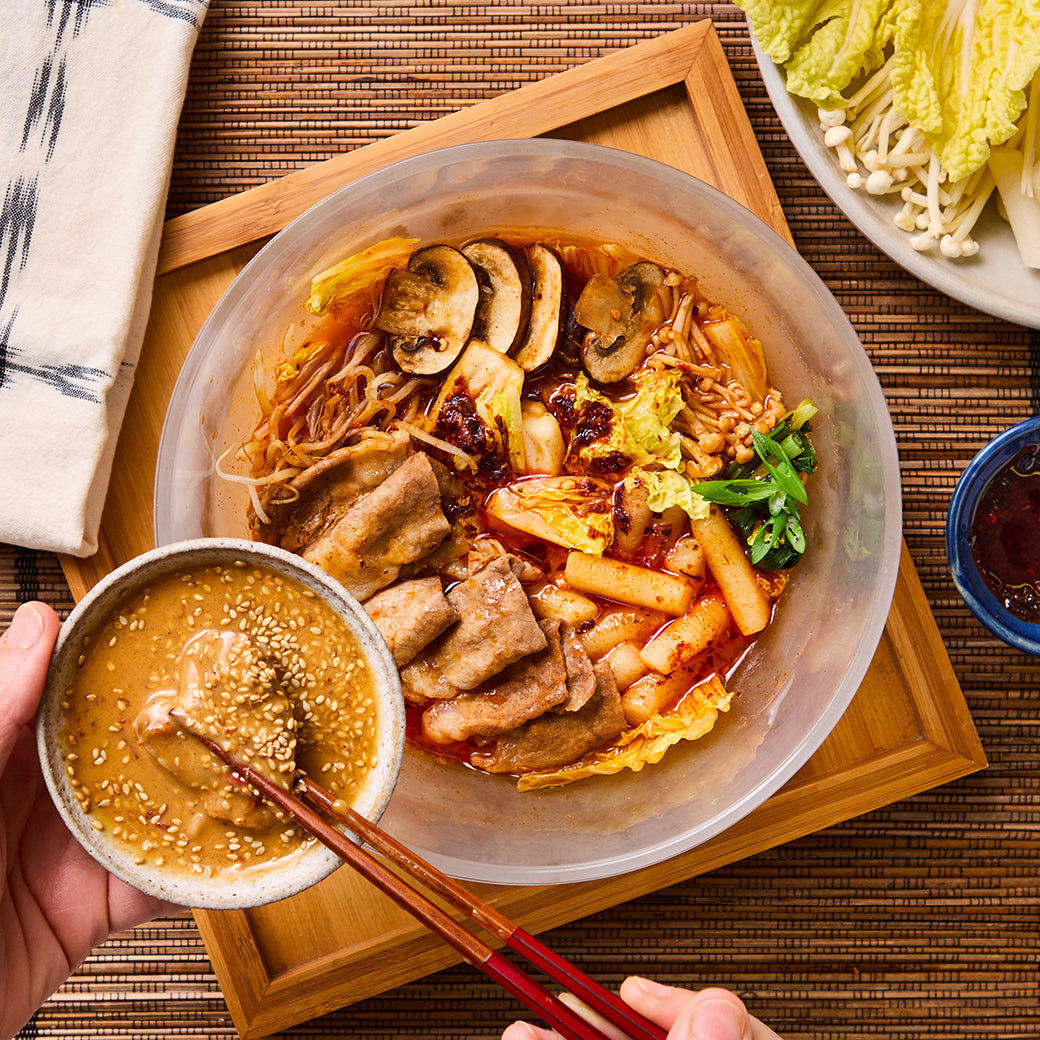What is Hot Pot?
Hot pot is a popular dish where meat, vegetables, and other flavorful ingredients are cooked in a bubbling pot of broth, usually over a hot plate on the table. It's a fun, shareable meal with lots of flavors. This microwave version makes it easier by steaming everything—meat, veggies, and rice cakes—with a delicious broth, all in one dish, no hot plate needed.
Can I make Hot Pot in the microwave?
Yes! Hot Pot can be made easily in the microwave using a Deep dish or Extra Large Dish. Anyday's silicone-lined lid locks in steam, allowing the ingredients to cook evenly and soak up the flavors of the broth. The microwave method is faster than traditional stovetop cooking, while still delivering the same delicious taste.
Why do I need to use a Deep Dish for Hot Pot?
The Deep Dish offers more capacity to layer ingredients properly. It also traps steam efficiently, ensuring even cooking for rice cakes, mushrooms, and meat. If you’re using a Shallow Dish, reduce the portion size to prevent overflow or switch to the Square Dish instead.
Do I need to pre-cook the ingredients for Hot Pot?
No pre-cooking is required for a microwave hot pot! Just layer all the ingredients into an Anyday Dish, cover with the lid and cook in the microwave. Steaming all of the ingredients together ensures the flavors meld, making it a true one-dish meal.
Can I use different proteins for Hot Pot?
Yes, absolutely! While this recipe uses shabu-style beef, you can easily swap it for thinly sliced chicken, pork, or even seafood like shrimp or fish fillets. Just be mindful of cook times as seafood cooks faster. If you’re vegetarian, tofu or plant-based protein alternatives work just as well.
How do I store leftover Hot Pot?
Allow the hot pot to cool completely, then cover the Anyday dish with the lid and refrigerate for up to 3 days. Leftovers reheat beautifully, making it an easy lunch or dinner option.
What’s the best way to reheat Hot Pot?
To reheat from the fridge, place the Hot Pot in an Anyday dish, cover with the lid, and microwave on full power for 2-4 minutes, stirring halfway through to ensure even heating.
Can I make Hot Pot vegetarian?
Yes! Swap the shabu meat for tofu, tempeh, or any plant-based protein. Add extra mushrooms, bok choy, or snap peas to bulk it up. You can also use vegetable broth instead of water for a deeper flavor.
What are rice cake sticks, and do I need to soak them?
Rice cake sticks are chewy, cylindrical rice cakes made from pounded rice flour. Unlike dried rice cakes, which require pre-soaking, fresh stick rice cakes do not. They soften perfectly in the microwave as they cook with the rest of the hot pot ingredients. If rice sticks are unavailable, you can use thick udon noodles instead.
Why is it important to layer the ingredients in a specific order?
Layering the ingredients correctly helps everything cook evenly. Placing the mushrooms, sprouts, and rice cakes at the bottom ensures they cook thoroughly, while the lighter, more delicate vegetables like Napa cabbage sit on top to avoid overcooking. The cabbage leaves also act like a secondary steamer, gently blanketing all of the ingredients. This method guarantees every ingredient is perfectly cooked.







